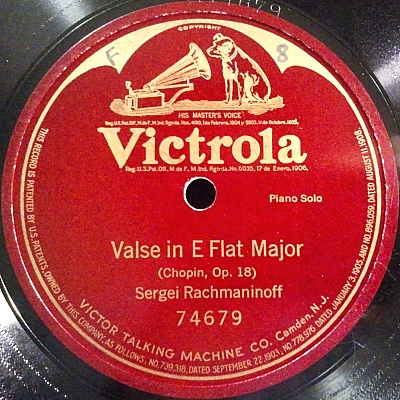

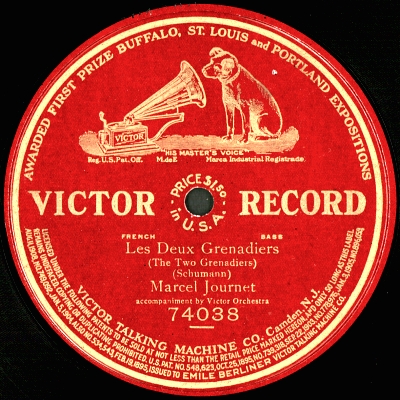 |
| Les Deux Grenadiers |
| Marcel Journet |
| Victor 74038 |
| Matrix# C-3165, Take 4 |
| January 15, 1910 |
| Camden, New Jersey |
| Note: Swish. |
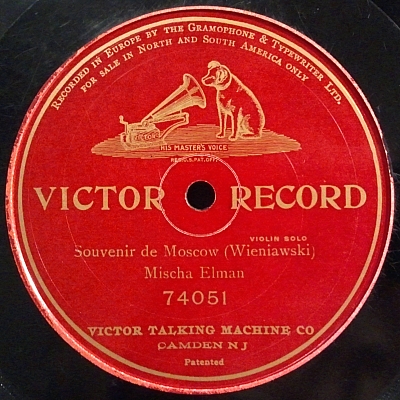 |
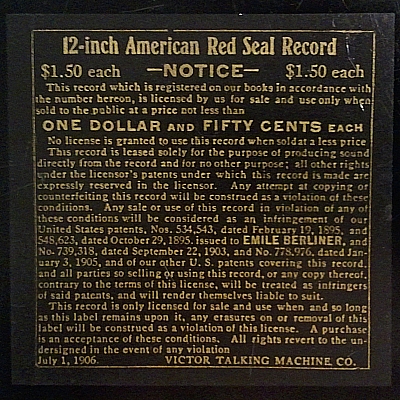 |
| Souvenir de Moscow | (Blank) |
| Mischa Elman | |
| Victor 74051 | |
| Matrix# 670c, Take 1 | |
| June 14, 1906 | |
| London, England |
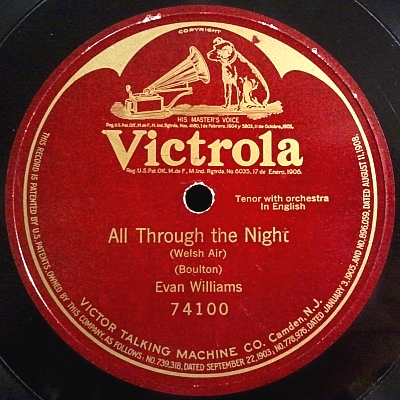 |
| All Through the Night |
| Evan Williams |
| Victor 74100 |
| Matrix# C-4870, Take 6 |
| June 25, 1915 |
| Camden, New Jersey |
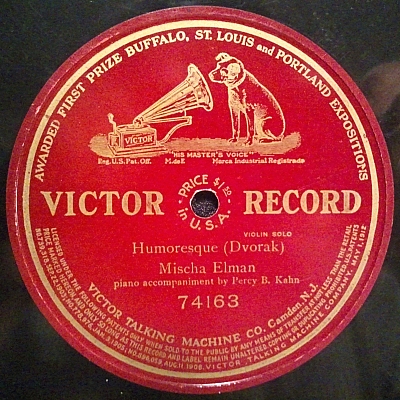 |
| Humoresque |
| Mischa Elman |
| Victor 74163 |
| Matrix# C-8799, Take 5 |
| May 17, 1911 (maybe Take 2; April 6, 1910) |
| Camden, New Jersey |
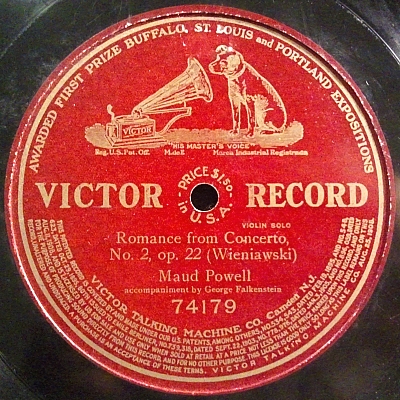 |
| Romance from Concerto, No. 2, op. 22 |
| Maud Powell |
| Victor 74179 |
| Matrix# C-9009, Take 3 |
| May 27, 1910 |
| New York, New York |
| Note: Slight volume flucuations on the recording itself at 1:35 and 2:23. |
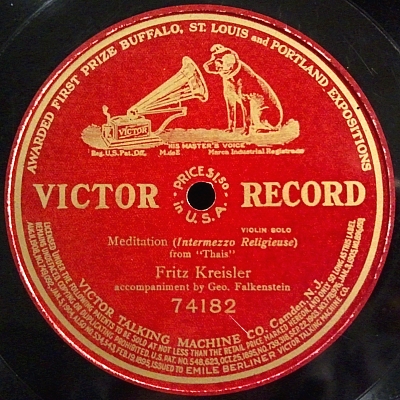 |
| Meditation (Intermezzo Religieuse) from "Thaïs" |
| Fritz Kreisler |
| Victor 74182 |
| Matrix# C-8944, Take 3 |
| May 13, 1910 |
| New York, New York |
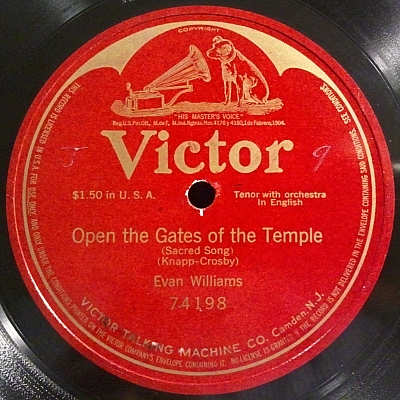 |
| Open the Gates of the Temple |
| Evan Williams |
| Victor 74198 |
| Matrix# C-9487, Take 2 |
| September 28, 1910 |
| Camden, New Jersey |
| Note: Worn. |
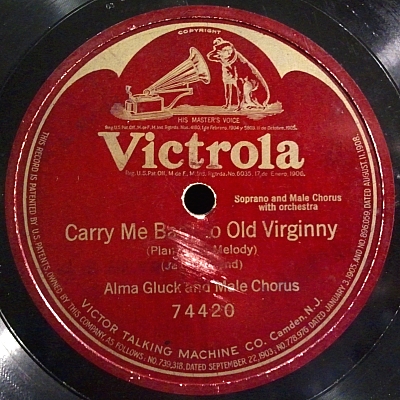 |
| Carry Me Back to Old Virginny |
| Alma Gluck and Male Chorus |
| Victor 74420 |
| Matrix# C-15397, Take 1 |
| November 13, 1914 |
| Camden, New Jersey |
| Note: Worn. |
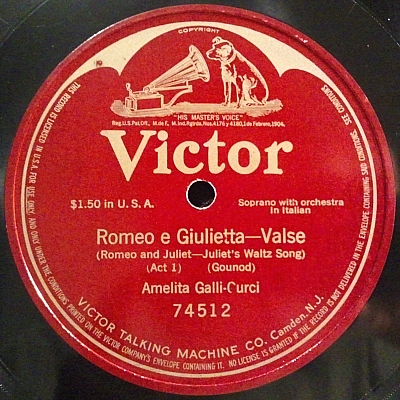 |
| Romeo e Giulietta - Valse |
| Amelita Galli-Curci |
| Victor 74512 |
| Matrix# C-19148, Take 1 |
| January 31, 1917 |
| Camden, New Jersey |
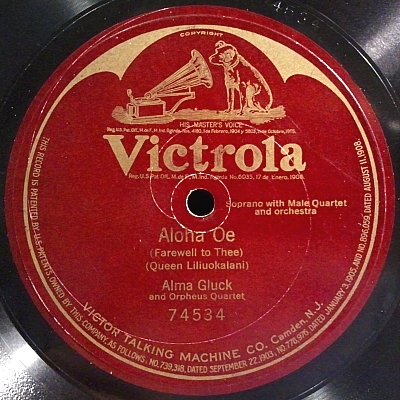 |
| Aloha Oe |
| Alma Gluck |
| Victor 74534 |
| Matrix# C-20093, Take 3 |
| June 26, 1917 |
| Camden, New Jersey |
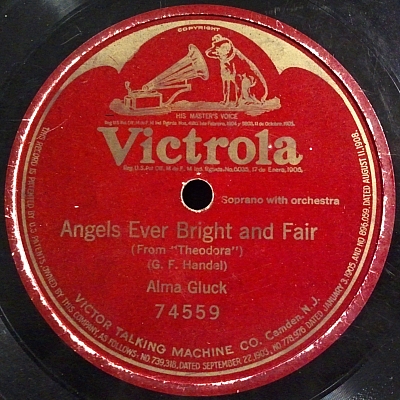 |
| Angels Ever Bright and Fair |
| Alma Gluck |
| Victor 74559 |
| Matrix# C-20679, Take 2 |
| September 18, 1917 |
| Camden, New Jersey |
| Note: Worn. |
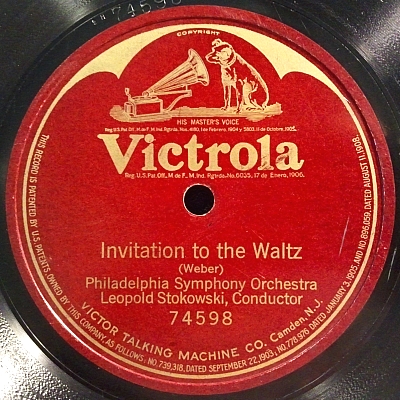 |
| Invitation to the Waltz |
| Philadelphia Symphony Orchestra Leopold Stokowski, Conductor |
| Victor 74598 |
| Matrix# C-22821, Take 2 |
| May 9, 1919 |
| Camden, New Jersey |
| Note: Worn. |
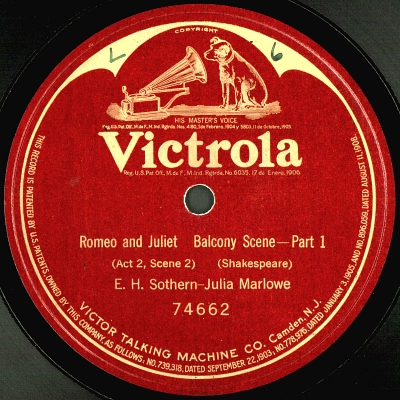 |
| Romeo and Juliet - Balcony Scene - Part 1 (Act 2, Scene 2) |
| E. H. Sothern - Julia Marlowe |
| Victor 74662 |
| Matrix# C-24663, Take 4 |
| November 1, 1920 |
| Camden, New Jersey |
| Note: A few scratches. |
 |
| Valse in E Flat Major (Chopin, Op. 18) |
| Sergei Rachmaninoff |
| Victor 74679 |
| Matrix# C-24903, Take 1 |
| January 21, 1921 |
| Camden, New Jersey |
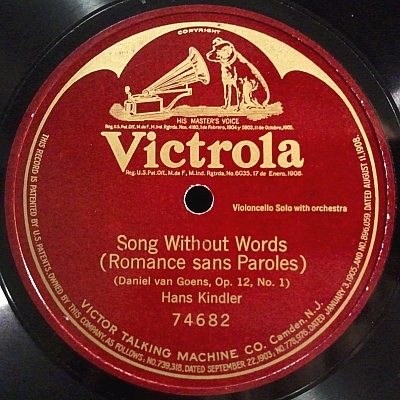 |
| Song Without Words (Goens, Op. 12, No. 1) |
| Hans Kindler |
| Victor 74682 |
| Matrix# C-24764, Take 6 |
| December 31, 1920 |
| Camden, New Jersey |
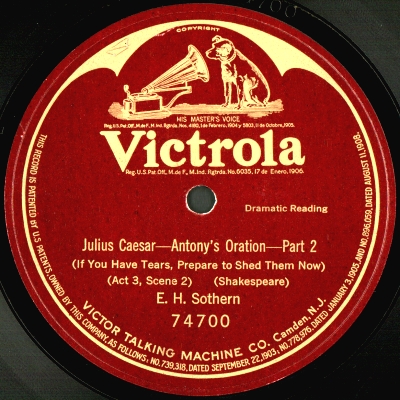 |
| Julius Caesar - Antony's Oration - Part 2 (If You Have Tears, Prepare to Shed Them Now) (Act 3, Scene 2) |
| E. H. Sothern |
| Victor 74700 |
| Matrix# C-24667, Take 1 |
| October 28, 1920 |
| Camden, New Jersey |
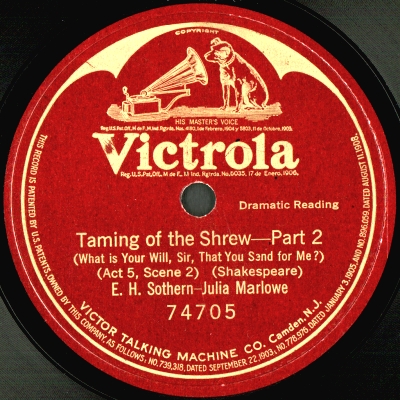 |
| Taming of the Shrew - Part 2 (What is Your Will, Sir, That You Send For Me?) (Act 5, Scene 2) |
| E. H. Sothern - Julia Marlowe |
| Victor 74705 |
| Matrix# C-24662, Take 4 |
| January 14, 1921 |
| Camden, New Jersey |
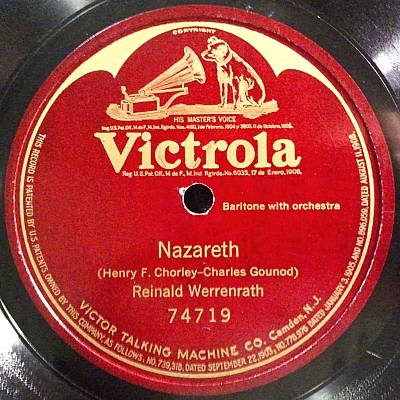 |
| Nazareth |
| Reinald Werrenrath |
| Victor 74719 |
| Matrix# C-25562, Take 7 |
| September 30, 1921 |
| Camden, New Jersey |
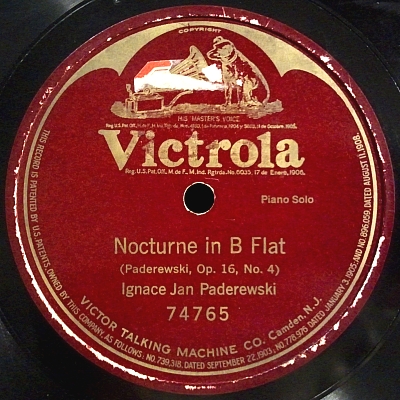 |
| Nocturne in B Flat |
| Ignace Jan Paderewski |
| Victor 74765 |
| Matrix# C-26600, Take 1 |
| June 1, 1922 |
| New York, New York |